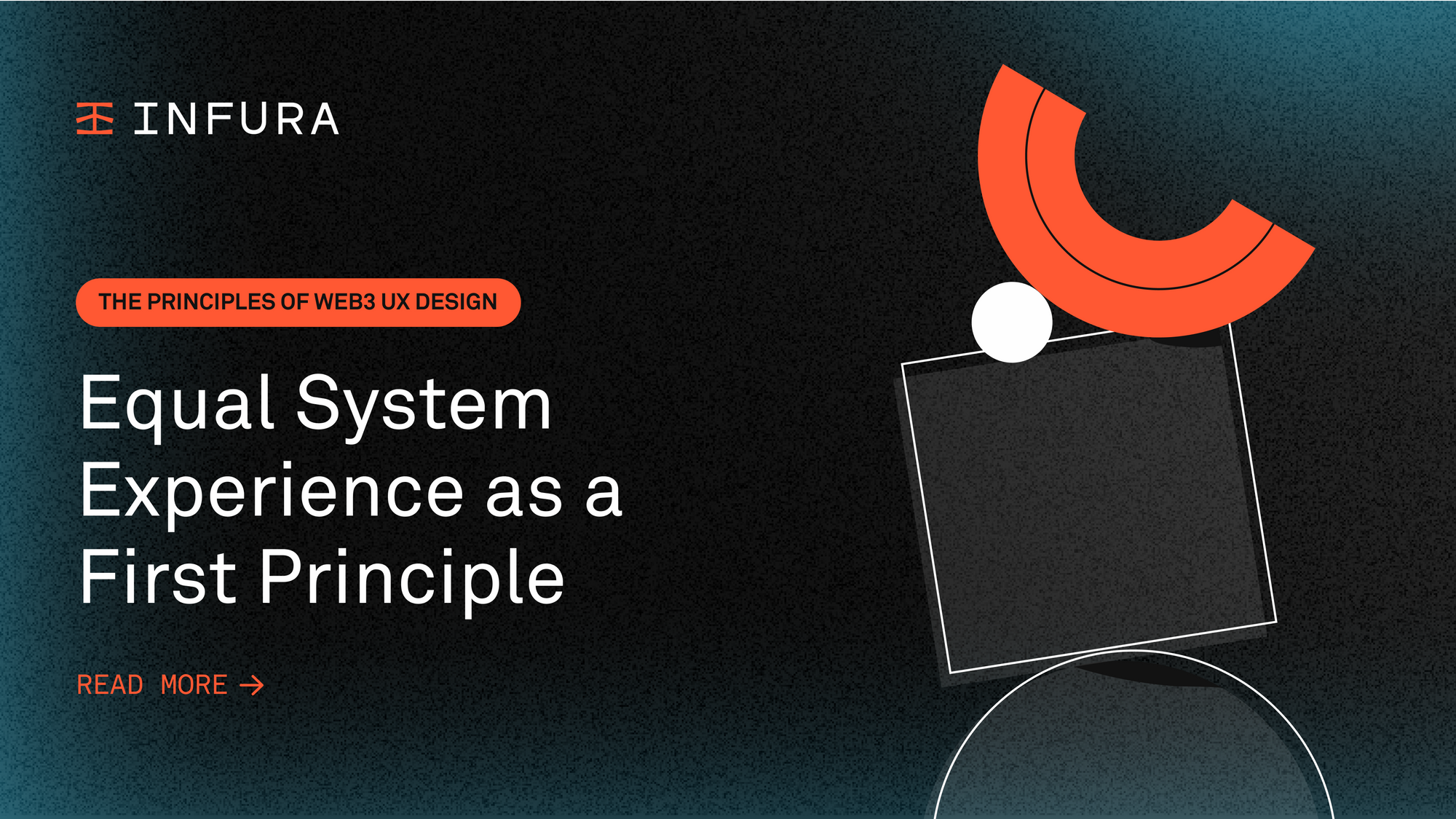The Principles of Web3 UX Design Part 3: Equal System Experience as a First Principle
Part Three of 'The Principles of Web3 UX Design' series delves into Equal System Experience and introduces RariMe, a ready-to-use MetaMask Snap, offering insights and practical guidance for enhancing user experiences.


Part Three of 'The Principles of Web3 UX Design' series delves into Equal System Experience and introduces RariMe, a ready-to-use MetaMask Snap, offering insights and practical guidance for enhancing user experiences.
How do you create products and services that cater to a diverse customer base? How can you ensure consistent experiences?
For us, it all comes down to Diversity, Equity, and Inclusion (DEI). DEI holds the utmost importance for the MetaMask and Infura's research teams. We emphasize diversity and inclusion to ensure that a wider range of people and perspectives contribute to our research, thereby ensuring that our UX design resonates with a broader audience.
We define an equal system experience as a systematic process of iterative design and quality assurance. This process ensures that the product experience remains consistent and that task completion is achievable for all user audiences and demographics.
Prioritize diversity and inclusion in web3 UX design
The world is a big place, with people of different shapes, sizes, and colors located in various geographical regions. It's a diverse world, and we aim to create web3 products that add value and serve builders everywhere. From a business perspective, this broadens our market share, enabling us to deliver greater value to diverse audiences, including web3 developers. It ensures that our tools provide equal experiences to all.
Achieving impact at scale in web3 design
From a research perspective, prioritizing diversity and inclusion allows us to make a more significant impact on a global scale. By asking non-invasive questions during research interviews about participants' locations and ethnic identities, we ensure that the voices we include are diverse. This approach helps us consider and prioritize new perspectives.
As the field of UX research and design for web3 continues to evolve, it's crucial to maintain the highest level of importance for diversity and inclusion. This ensures that value can be delivered to all audiences and creates a positive impact on a global scale.
Introducing Equal System Experience
Equality, equal experiences, and inclusion go hand in hand. At Infura, our UX professionals advocate speaking to a more diverse range of people to avoid tailoring development for one specific demographic. We engage with web3 developers of different ethnicities, countries, and demographics to shape, build, and deliver tools and software for a diverse world. We also consider the needs of differently-abled web3 developers, ensuring that our products are accessible to everyone.
How Rarimo uses MetaMask Snaps to solve interoperability for identity across web3 networks
In part one of this series on web3 UX design, we explored the utility of MetaMask Snaps and highlighted three ways Snaps enhance the user experience of web3 dapps: interoperability, authentication, and security. In part two, we reviewed the necessary steps to begin building your first MetaMask Snap which included installing Flask, starting a new Snap project, and exploring the Snaps API. In part three, we'll examine the ready-to-use Snap, RariMe, and how it enhances web3 UX by enabling secure and interoperable identity verification.
RariMe is a MetaMask Snap built on the Rarimo protocol, allowing you to securely store credentials and verify your identity without revealing personal information. Supported by the Rarimo Protocol and Zero-Knowledge Proof technology, RariMe enables you to receive credentials, generate Zero Knowledge Proofs, and share these proofs with dapps. The process is user-friendly, with integrated identity providers and dapps guiding you at each step.
Rarimo serves as the interoperability protocol underpinning RariMe. It specifically tackles the challenges of unifying web3 identities, which, like real-life identities, are influenced by factors such as community affiliations, activities, and asset ownership. However, the web3 ecosystem's fragmentation across multiple blockchains has resulted in disjointed digital identities, posing a significant interoperability challenge.
Rarimo overcomes these challenges by offering cross-chain identity, state, and digital asset management while ensuring privacy through embedded ZK proofs. It facilitates the transfer or replication of entities across chains and enables the creation of identity states that can seamlessly propagate throughout the web3 universe.
The Rarimo team adheres to these design principles:
- Decentralization: The interchain layer aligns with the decentralization of connected chains, avoiding centralization points. This is achieved through a network of independent validators and trustless oracles, collaborating to secure consensus on event sequencing.
- Extensibility: The protocol emphasizes extensibility, providing a versatile messaging foundation for various cross-chain applications. Users have the flexibility to propose and implement their sub-protocols, while Rarimo offers readily available identity and bridging sub-protocols.
- Rarimo Sub-Protocols: Furthermore, Rarimo Core supports EVM-compatible smart contracts, enhancing adaptability and flexibility.
- Scalable Security: Addressing scalability and security, Rarimo employs the Threshold Signature Scheme (TSS) to sign protocol outputs. TSS ensures that signature size remains consistent, regardless of the number of validator nodes involved, allowing for the expansion of the validator pool while maintaining fixed, low fees on destination chains.
- Instant Finality: To minimize delays in cross-chain processes, the protocol utilizes the proven Tendermint consensus mechanism, achieving instant finality with just a few additional seconds required to ensure protocol security.
As we wrap up this series, we've delved into the world of decentralized product development and learned about enhancing user experiences through MetaMask Snaps. Now, we invite you to explore the world of community-built Snaps and tailor your web3 experience via our official directory. For more insights and information, don't hesitate to check out our FAQ.


